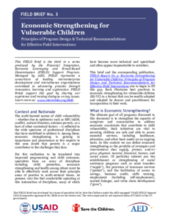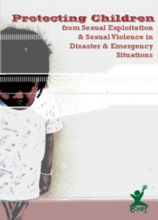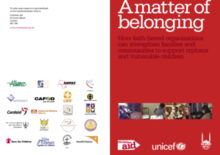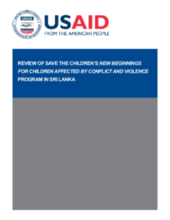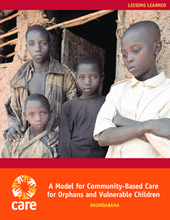Displaying 411 - 420 of 497
A brief illustration of ten economic strengthening tools that can be adapted to address child vulnerability due to HIV/AIDS, conflict, natural disaster, extreme poverty, or other contexts.
The Paris Commitments to protect children from unlawful recruitment or use by armed forces or armed groups. These principles revise and expand on the Cape Town Principles developed in 1997.
Evaluation of four child-focused DDR projects funded by the World Bank Multi-Country Trust Fund in the DRC. Includes detailed strategic analysis and recommendations.
UNICEF's global statistical report on progress against MDGs and other key child-focused indicators.
Introductory material for the Free Children From War conference held in February 2007 in Paris, France. Includes background, goals, and a short statistical summary detailing the achievements of care and reintegration programs since 1998. Lists the 1997 Cape Town Principles.
This Guide provides a number of practical strategies, tips and activities for working with stakeholders to prevent student dropout. Based on the work of CRS/Kosovo, this information is useful for other organizations and government bodies working on student dropout prevention and response within the region.
A practical guide for local and communtiy based organizations about how to protect children from sexual abuse and exploitation in disaster and emergency situations.
A guide for faith-based organizations working in developing countries on issues related to orphans and vulnerable children. Contains examples of successful community-based and family support care programs throughout the world that are run by faith-based groups. Discourages the use of institutional care and orphanages.
An evaluation of a programme in Sri Lanka that aimed to resettle and reintegrate children affected by armed conflict, prevent and respond to child abuse, and develop community based alternatives to institutional care.
A lessons learned document reviewing impacts of a community-based care and mentoring program for child-headed households in Rwanda.

